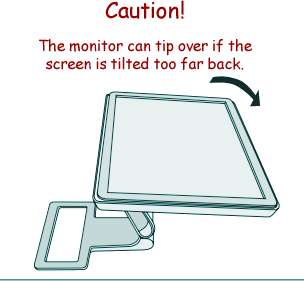GCSE Questions: Moments and Centre of Gravity
Q1.The diagram shows a back view of a computer monitor.

(a) In normal use, the monitor is stable.
(i) Explain the meaning, in the above sentence, of the word 'stable'.
It means the monitor will not easily fall over  if the monitor is given a small push
if the monitor is given a small push  as the centre of mass will remain vertically above the base.
as the centre of mass will remain vertically above the base. 
(2 marks)
(ii) State the relationship between the total clockwise moment and the total anticlockwise moment about any axis of the monitor when it is stable.
(total) clockwise moment = (total) anticlockwise moment 
 they are equal/balanced
they are equal/balanced 
(1 mark)
(b) The instruction booklet explains that the screen can be tilted. It also includes a warning.

Explain why the monitor will tip over if the screen is tilted too far back. Include the words: centre of mass, weight and moment in your explanation.
(3 marks)
The position of the centre of mass has changed  . The line of action of the weight is now outside the base
. The line of action of the weight is now outside the base  producing a (resultant) moment
producing a (resultant) moment  that makes the monitor topple.
that makes the monitor topple.
(Total 6 marks)


